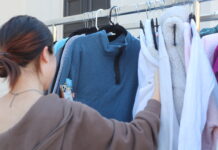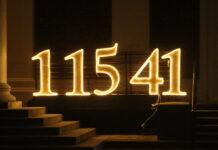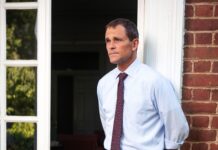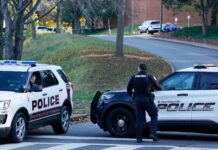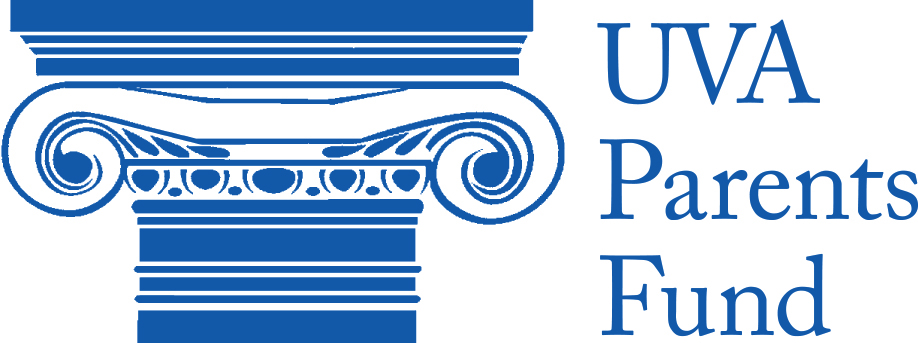Last Wednesday, on the 50th anniversary of Dr. King’s assassination, television host and UVa graduate Katie Couric premiered her new six-part documentary America Inside Out in Culbreth Theater.
Following UVa President Teresa Sullivan’s introduction, Couric walked onstage to a roar of applause. She began by explaining her inspiration for the documentary.
“For the last eight months, I’ve been crisscrossing the country exploring some of the thorniest issues of our day… my goal is to share these eye-opening conversations with you in this series,” she said. “So we can all continue the conversation in our homes, workplaces, and communities, I hope, armed with more information, perspective, and understanding, as well as just a little more empathy and compassion.”
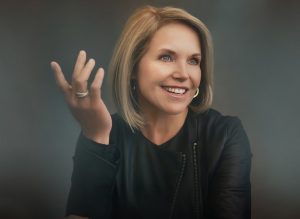
Each of the six episodes tackles a new issue, including gender inequality, the Muslim-American experience, and technology’s impact on society, among other topics. Couric’s first episode, entitled “Re-Righting History” will debut this Wednesday April 11 at 10pm on National Geographic.
The episode centers on the white supremacist rallies on August 11 and 12. Couric was present for the entire rally, including the torch marches on the night of the 11th.
The documentary offers insightful commentary and heartbreaking footage. Couric spoke with multiple residents and leaders, including a leader of Charlottesville’s Black Lives Matter activists as well as the head of the “Unite the Right” group.
Following the episode, Larry Sabato, the director of UVa’s Center for Politics, moderated a panel discussion about the episode.
Couric began the discussion by explaining her impression as a witness and her shock at how quickly the event erupted in such a horrific manor and became international news.
“I had no idea it was going to explode. I thought it was kind of below the radar,” she explained.
As a UVa alumnus, Couric said that these events do not define the Charlottesville community.
“This is not Charlottesville, these people came from outside of Charlottesville,” she argued.

Panelist Zyahna Bryant, a local Charlottesville High School student who initiated discussion about the statue, challenged Couric’s statement, setting the tone for a tense but insightful discussion.
“The issue is that we still have gentrification. We still have black people who are marginalized over and over again, politically, economically, socially,” Bryant noted.
The student then shifted to the topic of the Lee monument specifically, explaining that the monument is a “pinpointed image that we can use to say that we’re trying to tear down inequality here… So we can start with the monument because it doesn’t need to be there. It’s a participation trophy… It needs no space in the center of our city.”
As a civil rights activist and chair of the Blue Ribbon Commission on Race, Monuments, and Memorials for the City of Charlottesville, local resident Don Gathers added to Bryant’s thoughts with his own perspective. Like Bryant, Gathers noted that the true issue transcends the physical statue.
“It has nothing to do with the statue, it has nothing to do with history, and it has nothing to do with heritage,” Gathers said. “Those folks came and marched upon your lawn, 300 tiki-torch carrying Nazis… and then they came on August 12 carrying their AK 47s, their machetes, their lead pipes, their bats. They came with bottles full of urine and bleach and ammonium. And yet they said that they were having a peaceful demonstration.”
He turned to the audience, urging them to join the movement toward equality.
“It’s incumbent upon you all who sit here right now to take up a mantel, to jump into the foxhole with us, and to continue this fight,” he continued. “Unless – and until – we actually sit down and can have meaningful conversations… we’ll never progress as a society.”
Seth Wispelwey, a minister at United Church of Christ and a central organizer for Congregate Charlottesville, talked about his disappointment with the University for not stopping the Unite the Right movement earlier. Wispelwey provided his first-hand account of being a UVa alumnus and a Charlottesville community member who was tear gassed on August 12. He explained that as a white, heterosexual male, he believed his place in this movement was a humble one of supporting the cause and taking instruction from the BLM leaders.
“The University knew they were coming, and the failure to show up and do something about hundreds of white supremacists who advertised their intent to bring violence and hate to our town is telling…” he argued. “The systematic refusal to take seriously the violent threat of white supremacy specifically because it is baked into our national history… the documentary articulated, exposed, and walked us through so well.”
John Mason, a UVa associate professor in the Corcoran Department of History and the Vice Chair of the Blue Ribbon Commission, took the discussion further by putting the multifaceted importance of Confederate statues in context.
“The meaning of these statues is layered,” he stated. “There is a layer of meaning that has to do with the civil war. There is a layer of meaning that has to do with the time that they were erected, which was the Jim Crow era when the Klan was marching through Charlottesville.”
Mason continued to say that the death of Heather Heyer added a new layer to the statue’s horrific past, and the professor suggested the option of removing the statues and replacing them with “a significant memorial” to the slave trading that once occurred in Charlottesville.
As the event came to an end, Zyahna Bryant offered her final opinion on how to move forward as we approach the event’s anniversary this summer.
“The best way to be allies is not to take over but to support and to give any resources that you have to move forward with the efforts,” Bryant said.
Couric offered concluding sentiments as well, discussing the horrendous acts committed, reiterating her belief in the virtue of Charlottesville, and suggested a path forward for law enforcement dealing with any future white supremacist rallies in this town.
“I saw some real goodness in Charlottesville that weekend… I think if these people descend on Charlottesville again, pragmatically I would like the police to take a very different approach,” Couric said.
America Inside Out with Katie Couric premieres tomorrow on the National Geographic Channel.







